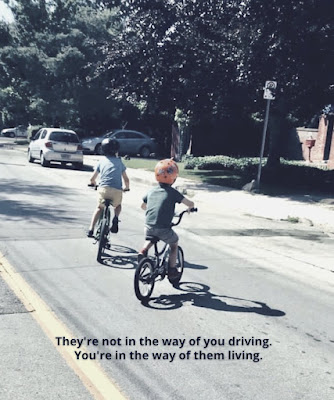With wildfire season upon us – and smoke already affecting millions across North America – we can expect it to reach the North Shore before long. So, I’d like to share some of what I’ve learned over the past few years on a personal journey, learning more about air quality:
- How it’s measured, and what measurements are most important
- Best sources of information, especially for wildfire smoke
Outdoor Air Quality
www.FireSmoke.ca
- See predictions and maps of air quality due to wildfire smoke for the next few days
- So you can get a sense of how long a smoke event will last, and/or see if you may want to revise any travel plans
- Built & maintained by UBC, with some excellent north shore folk that work on it.
PurpleAir
- Provides live air quality readings from a massive network of citizen-installed sensors.
- This “citizen science” project lets individuals place relatively affordable sensors at their homes or businesses. A win-win - they get useful very local data, and the rest of us can see the data is shared anonymously.
- Wildfire smoke pollution is highly localized (like wispy clouds/plumes) so the many sensors of PurpleAir usually give the most localized information. Government air quality stations are the gold standard as they are more reliably calibrated and do a more thorough job, but are fewer in number and slower to update. (see next section)
- Combining government data with PurpleAir readings gives the best of both worlds: accuracy, professional calibration, and real-time, localized detail.
- Day-to-day I use this PurpleAir data through an an app called Paku, and I’m able to put live, very local air quality and temperatures as a widget on my phone, or even on my watch
BC Government Air Quality Stations
- PM2.5
- Ground-level ozone (O₃)
- Nitrogen dioxide (NO₂)
- Sulphur dioxide (SO₂) They also calculate an Air Quality Health Index (AQHI) score as a summary, making this complicated science simpler to use, and is a Canadian standard.
- However, for wildfire smoke – which tends to be highly localized – the denser network of PurpleAir sensors are often more useful.
Indoor Air Quality
When AQHI values reach 4 or higher, we start to focus more on the quality of air inside our home – especially in the rooms where we work and sleep.
While commercial buildings may use high-grade filters and CO₂ monitoring, most homes (especially older, single-family homes) do not. Here’s what I’ve learned firsthand about improving indoor air quality:
- Smoke can penetrate indoors quickly, even with windows closed.
- HEPA filters are very effective – both for smoke and for seasonal allergies.
- Cooking, especially burning food or frying, can create indoor PM2.5 spikes.
- Closed bedroom doors at night led to surprisingly high CO₂ levels in our home. (our home is not well-sealed, nor modern)
My Setup: HEPA Filter & PM2.5 Sensors
The portable HEPA filter worked well – it was quiet and also helped with my seasonal allergies. Once I started using the PM2.5 sensor alongside it, I could actually see the filter’s impact. Even on smoky days, the sensor would show elevated levels, and when I turned on the filter, PM2.5 readings dropped within minutes.
Since exposure over a 24-hour period is what matters most for health, knowing my son was breathing clean air for 12+ hours at night gave me peace of mind. Soon I added filters to our other bedrooms too. The sensor also helped me decide what filter setting to use – high or low – depending on the PM2.5 levels.
These products below are not required - I've tried several over the past 7 years, so I’m sharing what products I’ve found useful and worked the best for me.
Airthings ViewPlus
I tried several PM2.5 and CO2 measurement sensors. This one is by far the best, and includes built in Radon sensing, VOC (Volatile Organic Compounds), Temperature, Humidity, and air pressure. It's an excellent device!
Coway Air Purifier
More importantly than measuring Air Quality, is cleaning the air in your home. As I mentioned, I first bought one of these when our son was a newborn, as a firesmoke kit. I then realized it would help with my seasonal allergies, and we now have one in each bedroom.
PM2.5 from Cooking & CO₂ in Bedrooms
Once I started using the sensors daily, I noticed occasional unexplained spikes in PM2.5 — which I soon traced back to cooking. A smoky grilled cheese, pancakes, or overdone toast would all cause noticeable indoor air pollution. It’s the 24hr exposure that really matters, but it has helped me recommit to using the stove ventilation fan more than I used to.
The sensor also measures CO₂ levels, a common way to gauge whether a room has adequate fresh air. Commercial systems usually increase air flowwhen CO₂ rises above 800 – 1000 parts per million (ppm). In our home, I found that with bedroom doors closed overnight, levels reached 1500–2000 ppm — high enough to cause headaches and reduce sleep quality.
Final Thoughts
Clean air – and clean water – are some of the foundations to healthy living. Since we’re breathing all the time (hopefully!), ensuring our family gets 8+ hours of good-quality air every night felt like a worthwhile focus.
I hope this has given you some good basic information and helps you improve the air quality in and around your home too.












